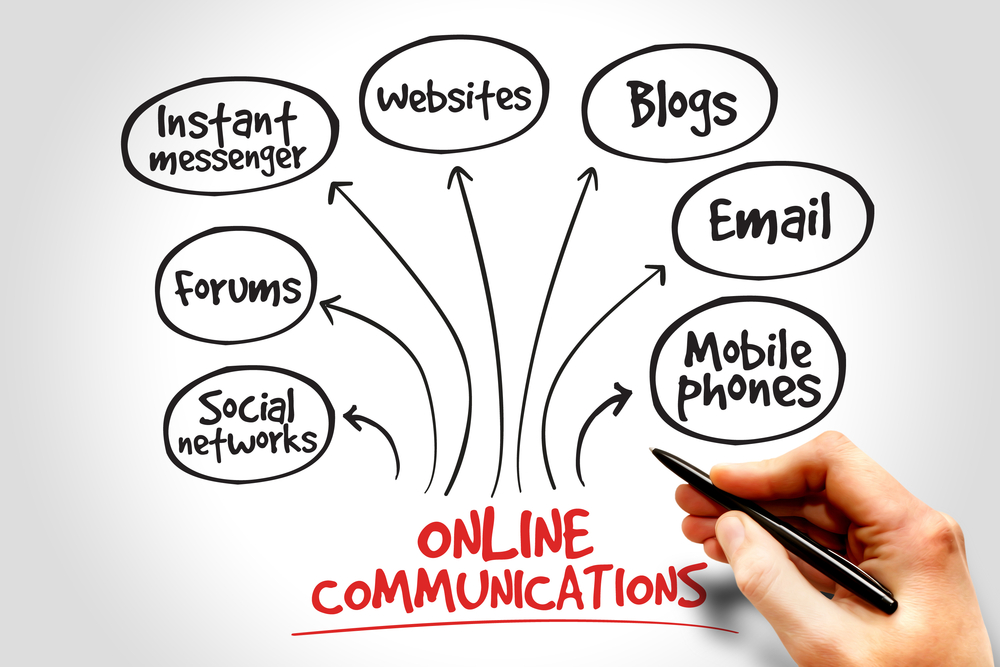Imagine that you’re on the hunt for a new coffee maker. You’ve scrolled through countless sleek ads and “honest” product reviews. You’re drowning in options, visualizing George Clooney everywhere, and afraid to commit.
But then, a friend reaches out. She knows how you like your coffee. She knows your budget. She just so happens to have bought a life-changing coffee maker last year, and there’s a smaller model that would fit perfectly on your counter. Just like that, the clouds part.
88% of consumers trust recommendations from friends and family than any other channel, making word-of-mouth–probably the oldest form of marketing–incredibly relevant today. And with a well-designed customer referral program, businesses of all kinds can harness the power of personal influence.
In this article, we’ll take you through the steps to create a referral program that wins long-term customers and generates real revenue.
What is a customer referral program?
Referral or “refer a friend” programs are a type of customer loyalty program. Customers act as referrers, recommending your product or service to others. Whenever one of those people (a “referee”) makes a purchase based on the recommendation, the referrer receives a reward.
In most referral programs, rewards take the form of incentives towards future purchases or engagement such as discounts, redeemable points, or access to exclusive perks.
A customer referral program relatively simple to set up and manage, and they can be an extremely effective tool both for revenue generation and brand awareness.
First and foremost, referral programs increase the likelihood of the referee (and, depending on the reward, the referrer) making a purchase. On another level, they deepen brand loyalty and strengthen and personalize a sense of community around your brand.
In fact, a study published in the Harvard Business Review found that customers acquired via referrals have a 16% higher lifetime value than other customers.
All kinds of businesses can benefit from referral programs. Online retailers can use them to stand out and build a following in a sea of options, while local businesses are well-positioned to take advantage of strong social and business relationships in their communities.
Step 1: Define your referral program objectives
Before you start designing the details of your customer referral program, make sure you’re clear on exactly what you want to achieve.
Consider your business goals
If your overarching goal is to boost revenue, are you more interested in increasing total monthly sales, boosting average order value, or hitting quarterly revenue milestones?
You might also set goals around customer acquisition, such as gaining a certain number of new customers within a set time period. Or, aim to increase customer loyalty by reducing churn rates or improving satisfaction scores.
Answering these questions will help you structure your customer referral program and choose your incentives later on. For example, if your main objective is to increase total monthly sales, you might focus on rewarding referrers with a percentage of the sales generated by their referrals.
On the other hand, if you want to boost average order value, you could offer tiered discounts or free shipping for larger orders, encouraging referees to spend more.
Streamline your marketing activities
In addition to your high-level business goals, you’ll also need to make sure your customer referral program complements the rest of your marketing efforts.
Consider whether you have other marketing activities planned–for example, around a holiday, new product launch, or special event–that would provide an opportunity to introduce and promote your program.
Not only will this give you a timeline to design your program; it will help you make effective use of existing marketing resources, assets, and opportunities as you roll it out.
Step 2: Identify your target customers

Your customer referral program will depend on leveraging the trust your existing customers hold within their circles of friends, family, and acquaintances. To tap into all this potential, you’ll need a good understanding of who your ideal referrers and referees are.
If you haven’t done so already, now is the time to practice customer segmentation. By analyzing your existing customer base, you can identify segments that are most likely to engage in referrals and be responsive referees.
Don’t waste time and resources trying to turn lukewarm customers into brand advocates. Instead, hone in on your “ideal referrers”.
These are your most loyal and satisfied customers. They’ve had exceptional experiences with your brand and would enthusiastically refer a friend to it.
If you’re using a good CRM solution, you should be able to identify these customers by filtering your customer lists according to purchasing behaviour, product ratings, and other relevant criteria.
Meanwhile, your “ideal referees” are individuals who are likely to become a new customer when referred. They may share similar characteristics with your existing customer base, making them a prime target for conversion.
Look for common characteristics, such as demographics, buying behavior, and psychographics, to create a detailed customer profile.
By giving thought to your referrers and referees, you can focus your efforts and tailor your messaging to appeal to both groups.
Step 3: Choose your referral incentives
Your incentives are the driving force behind your customer referral program, so you’ll need to make sure they strike a chord with your customers.
Effective referral incentives can take various forms, including discounts, cash rewards, loyalty points, exclusive access to products or services, or even tangible gifts. So, how do you know what to choose?
Start from a deep understanding of your target audience. What do your customers love about your products and services? What would make them excited to share their positive experience with your brand? Look at what your competitors are offering, as well as which of your past promotional events have had high participation rates.
You’ll also need to decide whether your referral program will reward only referrers, or include discounts for referees, too (this is known as a “double-sided” referral program).
A referred customer is four times more likely than other customers to recommend your brand to friends and family, creating a virtuous cycle that can have serious impact down the line. If new customer acquisition is one of your primary goals, you might want to offer referees a little something.
Of course, you’ll need to strike a balance between the appeal of the reward(s) and the program’s financial feasibility. Overly generous rewards may encourage customers to participate but could start to threaten your profit margins. Try to find that sweet spot where the incentives have a “wow” factor but are sustainable for your business.
To really go the extra mile, consider incorporating tiered rewards or bonuses – for example, referrers get increasingly large discounts for each new customer they convert.
This can encourage referrers to continue advocating for your brand, aiming to unlock higher-value rewards as they bring in more customers. Creating a sense of progression and achievement can do wonders to drive participation.
Step 4: Design the mechanics
If your referral process is too complicated, glitchy, or time-consuming, even your most enthusiastic referrers and referees will lose interest. Invest in tools that ensure a smooth experience for your customers and require minimal administrative work.
Your existing CRM software might include the ability to set up referral programs. If not, there are plenty of high-quality dedicated solutions. Here are a few features to look for when choosing referral program software.
Automated tracking
Automated tracking is a fundamental feature of referral program mechanics. It simplifies the referral process, ensuring that every referral and reward is accurately recorded without manual intervention.
A common means of tracking is with unique discount codes. Referrers might receive a special code which they can give out to their friends. If a friend uses the code, it not only applies a discount to that purchase, but automatically triggers a reward for the referrer.
Flexible incentives
Make sure your solution can handle the type(s) of incentives you want to offer, whether that means discounts, cash rewards, loyalty points, or exclusive access.
Keep in mind that as your program matures, you may want to change your incentives or expand on them–for example, by adding tiered rewards or letting customers choose from multiple options. Your solution should make it easy to tweak and build on your program without requiring a total overhaul.
Marketing templates
Templates can be a game-changer when it comes to promoting your referral program. These pre-designed templates for emails, social media posts, and other marketing materials save you time and effort in creating compelling promotional content.
A number of referral program solutions included customizable templates. Just add your own text and branding, and you’re ready to go.
Integrations
Ensure that your referral program software can integrate with other tools and systems your business uses, such your website and app, CRM software, email marketing platform, and e-commerce systems.
Step 5: Get the word out

Customer referral programs hinge on generating a sense of excitement–along with clearly and consistently managing your customers’ expectations.
When you started planning your program, you aligned the execution of your referral program with your high-level marketing agenda. Now, zero in on the key messages that will drive your program, and tailor them to each of your marketing and communications channels.
Website
Make sure your website prominently features information about the referral program. Create dedicated landing pages that explain the program’s details, benefits, and how it works. Use clear and persuasive calls-to-action to drive sign-ups.
Social media
Use your social media platforms to create buzz around your referral program. Design graphics or videos to explain the program visually, and encourage your customers to share their successful referral stories.
Email marketing
Craft compelling email content that highlights the benefits of your customer referral program. Send personalized emails to your potential referrers, explaining how they can participate and what rewards they can earn.
Remember that customer referrals don’t always happen right away. For best results, send out a series of follow-up emails to keep the program top of mind.
Customer success
Train your customer support team to assist customers with any questions or concerns related to the referral program. Ensure they can explain the program clearly and assist with any technical issues.
Finally, don’t forget to update customer resources such as your FAQ section with basic questions about how your program works.
Achieve long-term growth with a referral program
Your customers’ relationships with friends and family are more powerful than any market trend. By designing an irresistible, easy-to-use, and well-communicated customer referral program, you can start turning your most loyal customers into your most trusted advocates.

